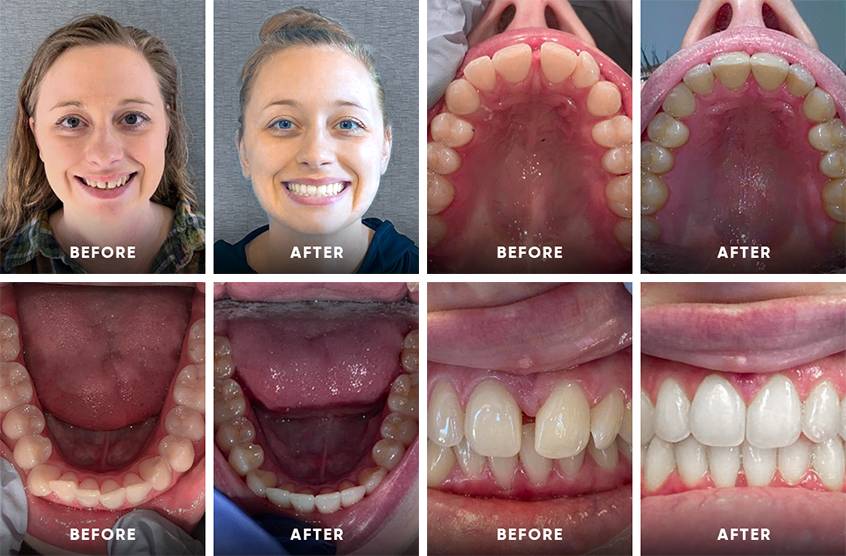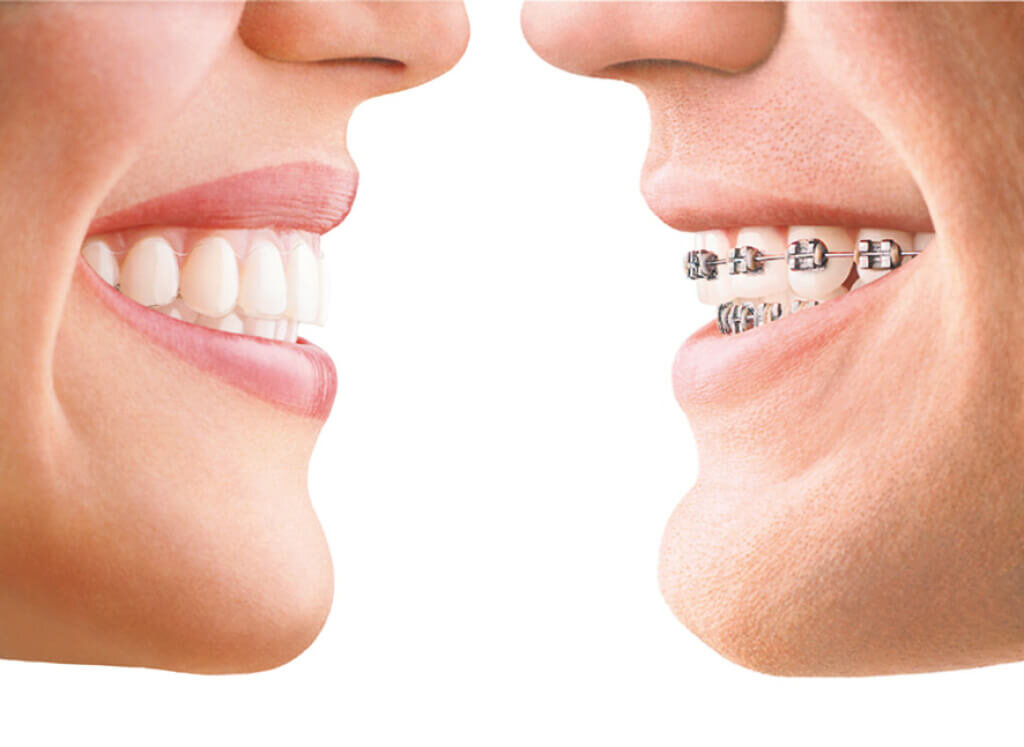Discover the Benefits of Invisalign for a Perfect Smile Makeover
Wiki Article
Invisalign vs. Traditional Dental braces: Which Alternative Is Right for You?
When considering orthodontic treatment, the choice in between Invisalign and conventional dental braces offers numerous important elements that merit careful assessment. Invisalign supplies a very discreet alternative with detachable aligners, while standard braces supply a much more visible yet efficient option for extreme imbalance. Each alternative encompasses distinct benefits and disadvantages associated to looks, convenience, treatment duration, and expense. Comprehending these nuances is critical for making an educated choice that aligns with your personal preferences and lifestyle. The inquiry continues to be: which option will ideal satisfy your orthodontic demands and assumptions?Review of Therapy Choices

In comparison, conventional dental braces contain metal brackets and wires that are adhered to the teeth. This approach applies continual pressure gradually to achieve placement. While effective for complicated orthodontic concerns, traditional braces need normal brows through for adjustments and can present obstacles in maintaining oral hygiene due to the problem of cleansing about brackets and wires.
Both choices have their merits, and the choice typically depends upon details oral conditions, lifestyle choices, and patient compliance. Ultimately, getting in touch with an orthodontic professional is essential for figuring out the most ideal therapy plan customized to specific needs. Understanding the nuances of each option can substantially influence the general success of orthodontic treatment.
Visual Factors To Consider
A significant factor affecting the selection in between Invisalign and typical dental braces is the visual allure each therapy provides. Invisalign aligners are crafted from clear plastic, making them practically unnoticeable when used. This discreet appearance is particularly appealing to grownups and young adults who may feel uncomfortable about their orthodontic therapy. The capacity to preserve a natural smile throughout the alignment procedure can substantially improve the client's confidence in social and expert setups.On the other hand, traditional dental braces contain steel brackets and cords, which can be extra obvious. While improvements in orthodontic technology have actually led to the growth of smaller braces and colored elastics, typical braces still keep a more obvious profile. For some people, the visibility of dental braces may prevent them from seeking needed treatment.
Eventually, the selection in between Invisalign and typical braces might hinge on personal choices concerning visual appeals. People who focus on discernment typically lean towards Invisalign, while those that are less worried about exposure might choose conventional dental braces. Recognizing the aesthetic ramifications of each alternative is essential for making a notified choice that straightens with one's lifestyle and preferences.
Comfort and Convenience

In terms of convenience, Invisalign aligners are removable, making it possible for patients to enjoy their preferred foods without limitation and preserve optimal oral hygiene. Cleaning and flossing are simplified, as the aligners can be taken out throughout these routines, whereas conventional braces call for cautious maneuvering around cords and braces.
In comparison, conventional dental braces necessitate regular changes, making them less practical for those with active schedules. Generally, the comfort and comfort of Invisalign make it an attractive choice click here for info for numerous people looking for orthodontic treatment.
Treatment Period and Effectiveness
While both Invisalign and standard braces work in correcting dental imbalances, the period of treatment can vary substantially between the 2 options. Normally, Invisalign therapy can take anywhere from 12 to 18 months, depending on the complexity of the situation. The clear aligners function by progressively changing teeth into their preferred settings, and normal follow-ups with an orthodontist aid ensure progress stays on the right track.
In contrast, standard dental braces usually call for a longer commitment, normally ranging from 18 months to three years. This results from their set nature and using braces and cables, which can be more efficient for extreme imbalances and intricate instances (Invisalign). The therapy effectiveness of standard braces is well-documented, as they enable for accurate adjustments and greater control over tooth movement
Learn More Ultimately, the selection between Invisalign and conventional braces may rest on both the anticipated treatment duration and the certain dental concerns at hand. Consulting with an orthodontist is crucial, as they can provide customized referrals based on private needs, making certain the chosen technique lines up with desired results and timeframes.
Expense Contrast and Insurance Policy Options
Expense plays a substantial duty in the decision-making process for individuals thinking about orthodontic treatment, whether choosing Invisalign or typical dental braces. Usually, the cost of Invisalign ranges from $3,000 to $8,000, while conventional dental braces typically set you back between $2,000 and $6,000. Aspects influencing these costs include the intricacy of the case, the duration of therapy, and geographical place.Insurance coverage can significantly impact out-of-pocket costs. Several oral insurance plans supply partial protection for orthodontic treatments, yet the specifics can differ commonly. It is vital for patients to review their insurance coverage to identify the level of protection for either choice. Normally, traditional dental braces may be more often covered by insurance plans contrasted to Invisalign, which some insurance firms categorize as an aesthetic treatment.
Furthermore, numerous orthodontic techniques offer adaptable payment plans, making both treatment choices a lot more accessible. Patients ought to ask about potential financing options and discounts for upfront repayments. Examining the overall expense, including insurance benefits and payment plans, is important for making an informed decision that aligns with both aesthetic choices and budget plan factors to consider.

Conclusion
In recap, the selection in between Invisalign and conventional dental braces rests on numerous factors, including aesthetic choices, convenience, therapy period, and expense. Invisalign uses a discreet, removable option that facilitates dental health and nutritional adaptability, while standard braces may be preferable for intricate dental issues and usually come with a reduced price factor. Inevitably, appointment with an orthodontist is necessary to examine private circumstances and figure out the most appropriate therapy choice for achieving optimum dental placement.When thinking about orthodontic treatment, the option in between Invisalign and standard braces presents numerous essential factors that warrant careful evaluation.Comparing Invisalign and conventional dental braces discloses distinctive therapy alternatives for orthodontic adjustment.While both Invisalign and conventional braces are efficient in correcting oral imbalances, the duration of therapy can vary dramatically in between the 2 choices.Price plays a considerable duty in the decision-making process for people taking into consideration orthodontic treatment, whether deciding for Invisalign or conventional dental braces.In recap, the option in between Invisalign and traditional braces pivots on numerous elements, including aesthetic choices, convenience, treatment duration, and price.
Report this wiki page